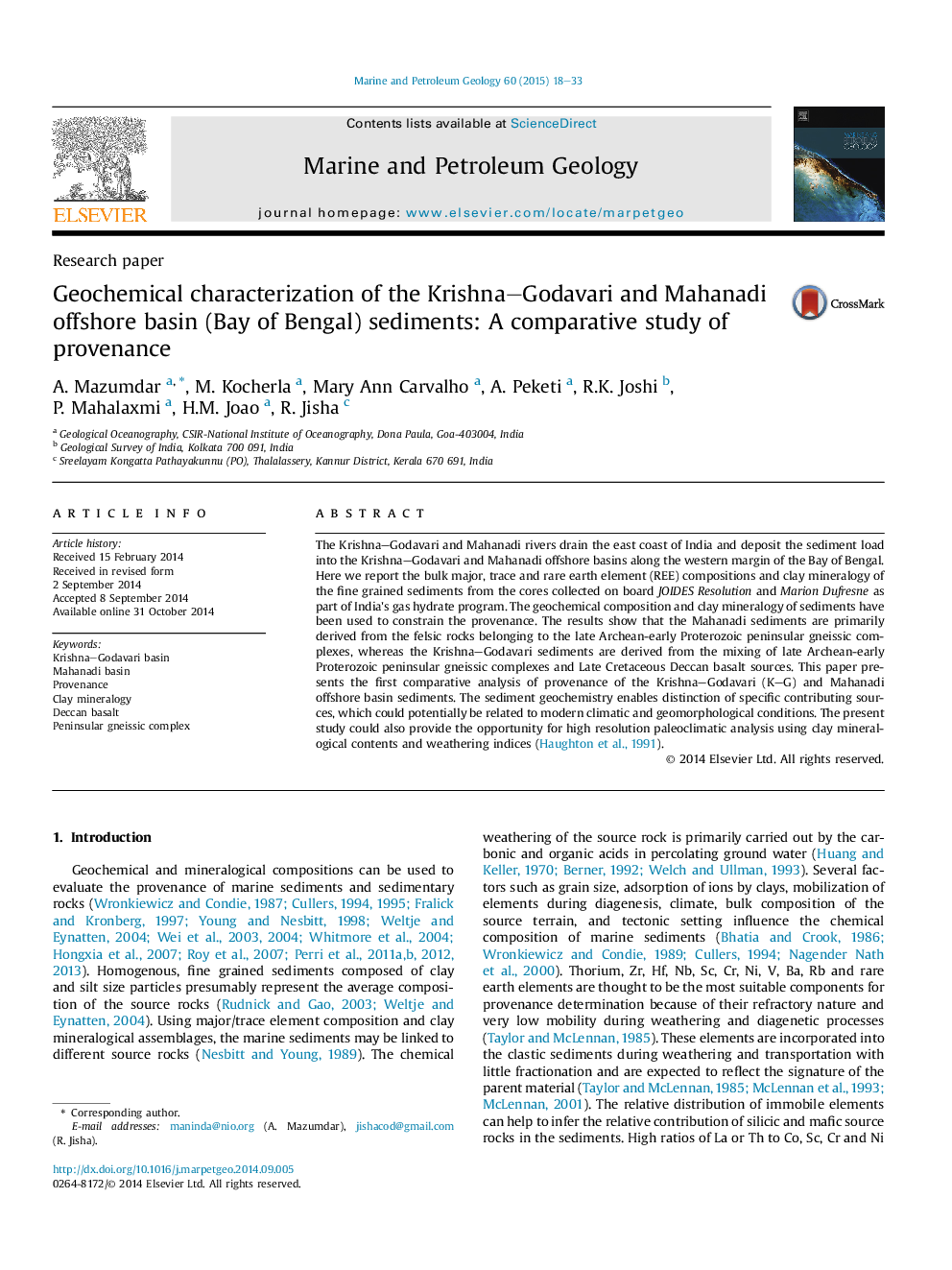| کد مقاله | کد نشریه | سال انتشار | مقاله انگلیسی | نسخه تمام متن |
|---|---|---|---|---|
| 4695532 | 1637165 | 2015 | 16 صفحه PDF | دانلود رایگان |
• K–G basin sediments are derived from the Deccan basalts and granitic complex.
• Mahanadi sediments are derived primarily from the granitic complex.
• The negative Eu anomaly in Mahanadi suggests primarily granitic provenance.
• Insignificant Eu anomaly in K–G sediments shows contribution of Deccan basalts.
• Positive Ce anomaly in the K–G sediments is attributed to weathering/diagenesis.
The Krishna–Godavari and Mahanadi rivers drain the east coast of India and deposit the sediment load into the Krishna–Godavari and Mahanadi offshore basins along the western margin of the Bay of Bengal. Here we report the bulk major, trace and rare earth element (REE) compositions and clay mineralogy of the fine grained sediments from the cores collected on board JOIDES Resolution and Marion Dufresne as part of India's gas hydrate program. The geochemical composition and clay mineralogy of sediments have been used to constrain the provenance. The results show that the Mahanadi sediments are primarily derived from the felsic rocks belonging to the late Archean-early Proterozoic peninsular gneissic complexes, whereas the Krishna–Godavari sediments are derived from the mixing of late Archean-early Proterozoic peninsular gneissic complexes and Late Cretaceous Deccan basalt sources. This paper presents the first comparative analysis of provenance of the Krishna–Godavari (K–G) and Mahanadi offshore basin sediments. The sediment geochemistry enables distinction of specific contributing sources, which could potentially be related to modern climatic and geomorphological conditions. The present study could also provide the opportunity for high resolution paleoclimatic analysis using clay mineralogical contents and weathering indices ( Haughton et al., 1991).
Figure optionsDownload as PowerPoint slide
Journal: Marine and Petroleum Geology - Volume 60, February 2015, Pages 18–33
